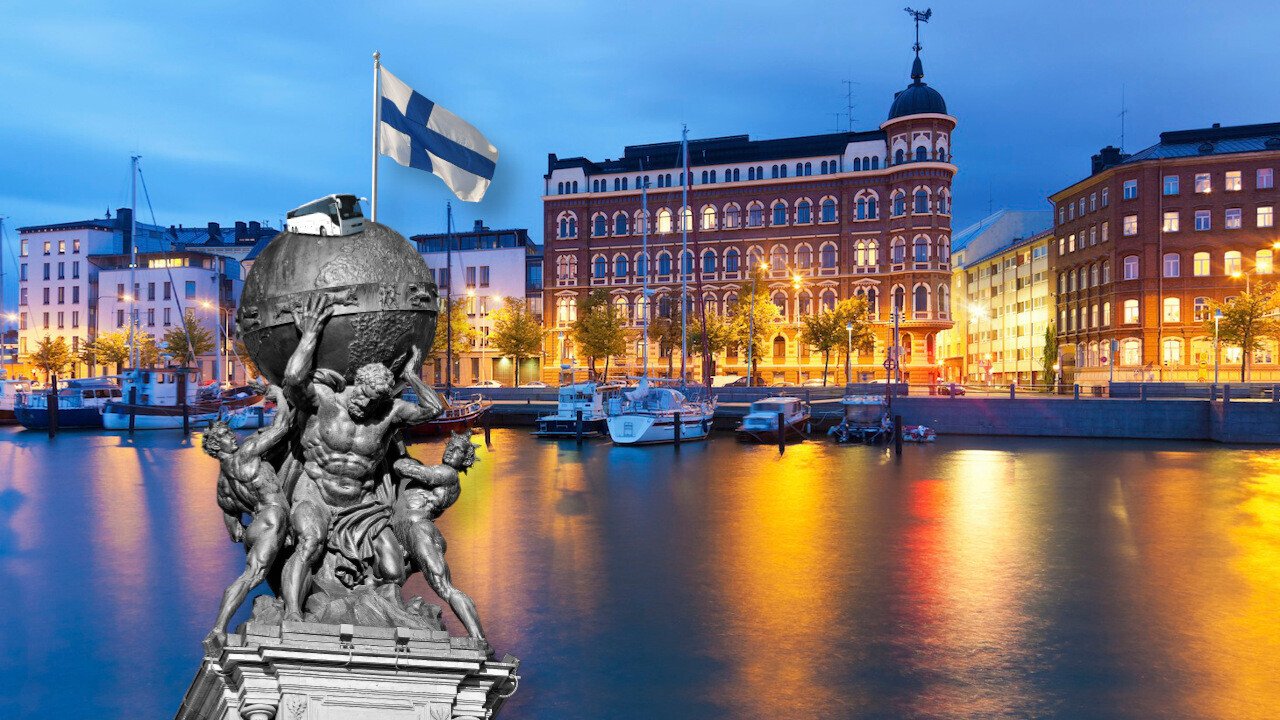
This article was written by Olivier Bonfils, Senior Business Advisor at Helsinki Business Hub on The Urban Mobility Daily, the content site of the Urban Mobility Company, a Paris-based company which is moving the business of mobility forward through physical and virtual events and services. Join their community of 10K+ global mobility professionals by signing up for the Urban Mobility Weekly newsletter. Read the original article here and follow them on Linkedin and Twitter.
The Business of Mobility is an Urban Mobility Company series highlighting some of the most successful new businesses in the mobility sector. Featuring a closer look at the way in which companies stand out, CEOs, Directors and other c-level executives elaborate on what it takes to turn a great idea into a great company.
Helsinki Business Hub is a business development agency dedicated to attracting foreign direct investment, particularly those companies who can contribute to the circular economy. In 2016 Finland became the first country to create a roadmap to a circular economy, and in 2020 Helsinki released its own Roadmap for a Circular and Sharing Economy. One of the key policy tools of Helsinki’s circular economy is ‘green mobility investment’, i.e. investments that encourage a modal shift towards active mobility and public transportation.
A culture of collaboration
Finland aims to transform itself into a circular economy by 2035 and achieve carbon neutrality in that same year. As per the Paris Agreement, Finland is committed to a fossil-free transport sector, halving emissions by 2030 and eliminating them altogether by 2045. I know that when it comes to carbon, countries are making a lot of promises, some of which are going to be hard to keep. But as a Frenchman who relocated to Finland a couple decades back, I can attest that Finns are serious about doing what they say they’re going to do. Not only that, but there’s a culture of collaboration here and a good understanding between the private and public sectors. Finland also happens to be a pioneer in mobility as a service (MaaS).
Who started MaaS?
The origins of MaaS go back to the late 90s, when Gothenburg trialled a monthly subscription service for transport. But this was discontinued for various reasons and it was some years before the idea moved centre stage in the mobility debate. From around 2012 Sampo Hietanen (then CEO of Intelligent Transport Systems Finland) and Sonja Heikkila – a Masters student at Aalto University –with support from Finland’s transport ministry, did a lot of work in popularising the concept. Hietanen later founded MaaS Global – launching the Whim app in 2017 which became the first fully functional commercial MaaS application. As Ramboll notes “there is arguably no place in the world where the concept of MaaS is more developed than in Helsinki.” Today “Whim users in Helsinki make 73% of their trips on public transport compared with 48% for non-users, while 42% of all Whim user’s city-bike trips are combined with public transportation.”
A commitment to openness and open data
I think what makes Helsinki such a good place to start a business is that there’s a good understanding here about the boundary between private and public sectors. The public sector sets fair rules and applies them evenly to all players, regardless of how big or small they are, or whether they’re local or foreign. Again, something to do with the ‘do what you say; say what you do’ Finnish mindset. Our main public transport operator HSL opened its ticketing API to other MaaS operators. Indeed, Helsinki has one of the most open MaaS systems in the world, with everyone competing on equal footing, all for the benefit of providing a better service to residents.
Helsinki Region Infoshare gives everyone access to hundreds of applications, datasets and APIs free of charge. As part of the circular economy drive we’re really interested in creating a smart ecosystem that supports business and reduces carbon and waste. We want startups to quickly plug into existing networks; which we’ve been recognized for. In its Global Startup Ecosystem Report, Startup Genome ranked Greater Helsinki 4th in the ‘Emerging Ecosystem’ category. The report notes Finland’s publication of a National AI Strategy in 2017 (an EU first) and a free AI education program attracting 90 000 students.
AVs and batteries
Greater Helsinki has just over 1.5 million residents; a decent enough consumer scale but nothing like London or Paris. If we’re at a slight disadvantage in attracting B2C mobility startups, we’re making up for it with an effort to attract B2B startups, particularly in AVs and batteries. Finland is building an ecosystem for the autonomous vehicle business. PAVEF (Platform for Autonomous Vehicles Ecosystem Finland) is dedicated to boosting innovation and ultimately establishing AV business operations in Finland that exceed a billion Euro by 2029. Local company Unikie has been awarded funds to begin setting up the ecosystem.
Batteries is another exciting area of potential innovation. Finland recycles 49.2% of its electronic waste (the EU average is 34.8%). Batteries Finland is dedicated to helping the country meet its goal to become a leading force in battery recycling. Interestingly, Finland has all the key minerals used in lithium-ion batteries. However – as part of our dedication to the circular economy – we’d rather keep those beneath the ground than mine them. The European Commission has requested that Finland take responsibility for the development of battery recycling in Europe. BATCircle (the circular ecosystem for battery metals consortium) is strengthening ties between private companies and research organizations and developing new business ideas to make the battery economy circular.
Sharing, transparency and resource savings
The fear is that a big MaaS player could come in and monopolise markets and that perhaps policymakers need to defend against this. Our approach is somewhat different. We want to keep the MaaS system open to as many players as possible and encourage open data and open APIs. As a mobility user you should be able to see a certain minimum of information from every mobility operator in the city. We have a clear goal to make MaaS available to as many players as possible and not necessarily to protect a local incumbent. That said, this is a high-trust society that does not like to make too many things compulsory. And I think this all adds to making Helsinki a good place to pioneer the new values of urban mobility, which are about sharing, transparency and resource savings.
Do EVs excite your electrons? Do ebikes get your wheels spinning? Do self-driving cars get you all charged up?
Then you need the weekly SHIFT newsletter in your life. Click here to sign up.
Get the TNW newsletter
Get the most important tech news in your inbox each week.




